Cost per lead is a significant, but simple, marketing metric you can use to determine how well your campaigns are performing. We show you how to calculate cost per lead and how to get even more reliable data to better prove the impact of your marketing efforts.
There are a whole host of marketing metrics you can use to calculate your impact. However, it’s clear that some metrics are more valuable than others.
The issue marketers are faced with is deciding which marketing metrics are best to track. In fact, we found that only 23% of marketers are confident they’re tracking the right KPIs.
And when you’re generating leads that convert into sales, it’s no wonder you’re struggling.
But don’t worry, measuring your marketing success doesn’t need to be difficult. In fact, we wrote a whole guide on how you can better measure your marketing.
In this blog, you’ll learn:
Plus, we’ll go into why cost per lead isn’t enough on its own and introduce you to revenue per lead.
Let’s get stuck in!
Pro Tip
Learn more about lead tracking and lead generation with our handy guide.
We’ll walk you through how to generate more leads, and how to effectively track them and their marketing touchpoints. Download the full guide here.
If you’re generating leads for your business, then cost per lead is a vital metric you need to work out how to track.
Related: Complete guide to lead tracking and lead generation.
Cost per lead is a key marketing metric that allows you to measure the effectiveness of your marketing in relation to generating new leads for your sales team.
Put simply, cost per lead is the investment required to acquire a new lead for your business.
A lead is a person who has visited your website and expressed interest in your product or service. This expressed interest could be downloading gated content, booking a demo or another key conversion goal.
Cost per lead is closely linked to other key marketing metrics such as cost per acquisition.
By quantifying your cost per lead, you can attach a tangible monetary value to your leads so your marketing team can better understand how much budget is needed to acquire new leads.
Cost per lead can be used across all of your marketing content and strategy. It can also be broken down by channel and campaign so you have a better understanding of how individual aspects of your marketing work to drive new leads.
All you need to calculate cost per lead is your total number of leads and your total marketing spend.
Calculating your cost per lead couldn’t be easier.
The formula for cost per lead is simple. Just take your total marketing spend and divide it by the total number of new leads. This will give you your cost per lead (CPL).
You need to be sure to calculate your number of leads and marketing spend within the same timeframe to ensure your result is accurate.
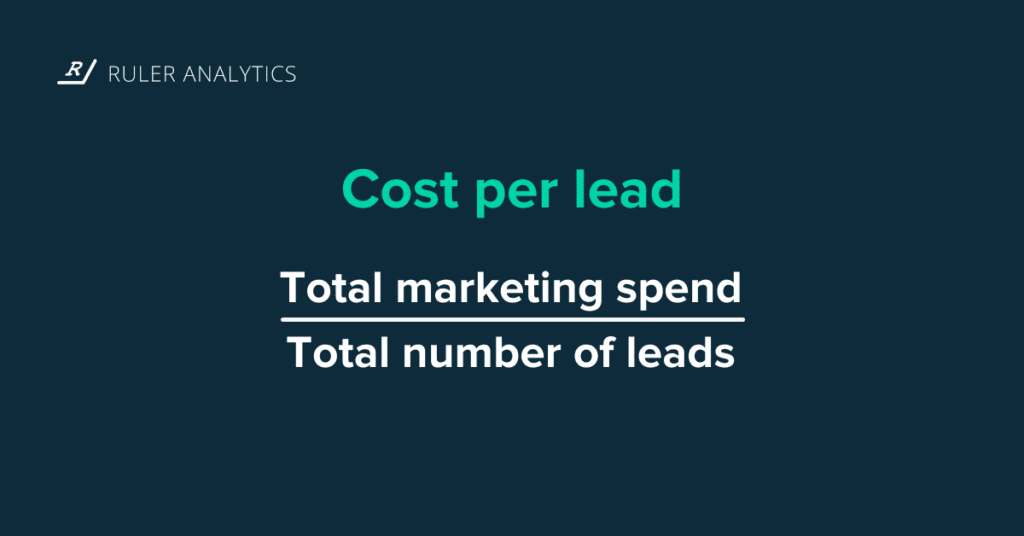
Remember, your marketing spend needs to include:
You can also attach a monetary value to your time too, to get a better understanding of how hard your marketing needs to work to drive new leads.
Use our cost per lead calculator to find out how much it costs you to generate a new lead. Just enter your figures and we’ll do the rest.
Cost per lead is a great metric to use to understand how your marketing is working to drive new leads.
But that’s all they are, leads. They are not guaranteed revenue.
And that’s not all.
Are you 100% sure you’re tracking all of your leads correctly?
Here’s a quick example scenario. Using this, we’ll explain the three main issues with using cost per lead as your main marketing metric.
Your company wants to understand how your PPC campaign has worked to drive new leads.
You calculate that you spent £1,000 on this particular pay-per-click campaign and that 20 users converted into a lead.
So, the cost per lead = £1,000/20 = £50
That means the PPC campaign costs your company £50 for every new lead created.
The first issue and this is a big one, is to ask yourself, are you even tracking your leads properly?
Related: 6 ways to track your marketing leads
Look at it this way. There are many ways a user can convert. Leads could convert via phone call, via a form submission or via a live chat. Are you tracking all of those avenues?
We surveyed marketers to find out what they’re tracking, and what they struggle with tracking.
We found that 36% of marketers who use form submissions struggle to track them, while 62% of marketers struggled to track phone calls and 52% of marketers struggle with tracking live chat.
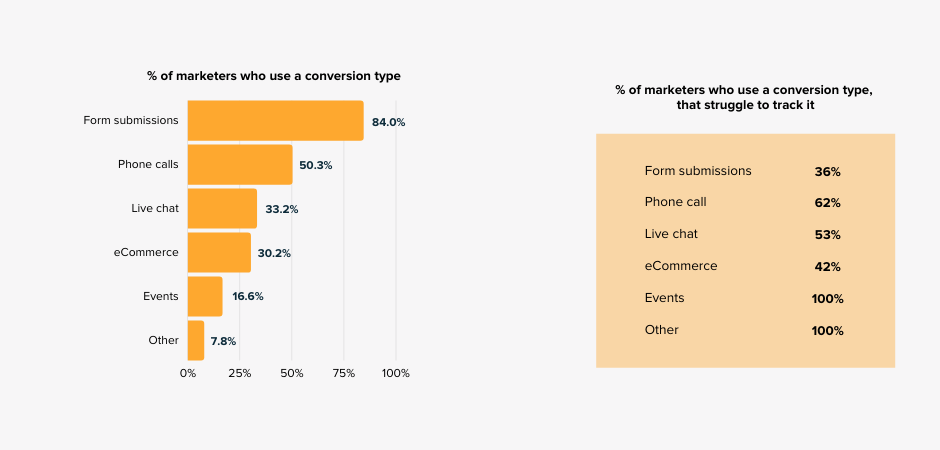
⚡️ Pro Tip
Want to better track your lead conversions?
Read our guides to learn how to track live chat, track form fills and even phone calls.
Let’s look at the example formula from before, again. You spend £1,000 on your PPC campaign. It generates 20 leads.
Or so you think.
In fact, you’re only tracking form submissions. You miss that the campaign actually drove a further 15 leads via inbound call and 5 via live chat.
That’s 40 leads now. Double the number we thought! If we recalculate our cost per lead, it leaves us with a very different figure. £1000/40 = £25
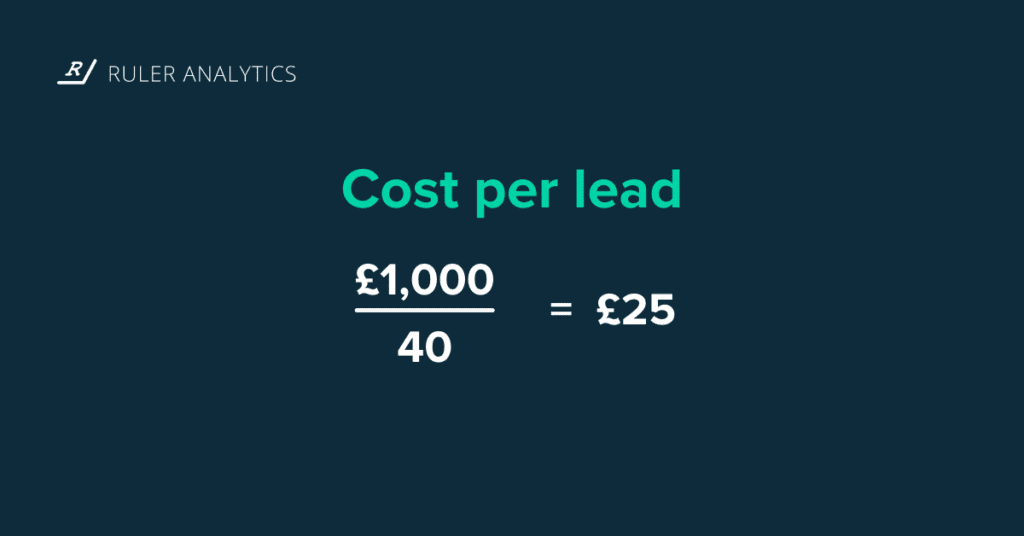
That’s half the cost it was previously. If you’re not tracking every entry a user could take to become a lead, then you’re definitely not getting an accurate cost per lead.
While we know now that your PPC campaign generated 40 leads, how much revenue did it generate?
Let’s say in this example, only 12 of those leads closed into a sale.
While our cost per lead is still £25, our customer acquisition cost (CAC) is actually over £80. That’s a difference of £60 in just one ad campaign.
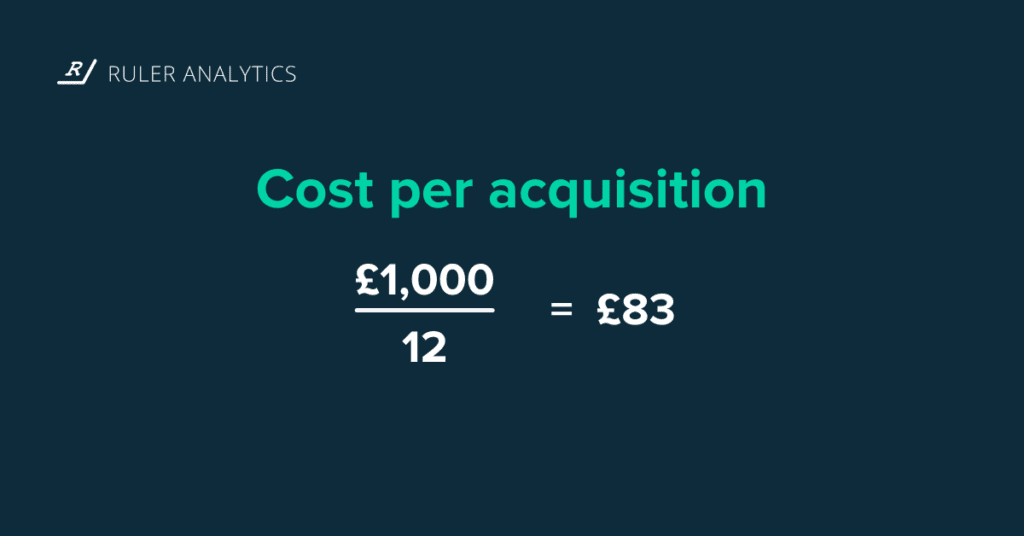
When big budgets are involved, that leaves a lot of room for error.
But don’t worry, we’ll explain how you can go beyond cost per lead and track your marketing by revenue.
Another issue with cost per lead is that it assumes that conversions are made directly.
How many times have you visited a website for the first time and converted straight away?
Related: Full guide to customer journey stages
Probably somewhere between never and one or two times, right?
Even if you are tracking your leads correctly, how do you know a user didn’t see your PPC campaign and then convert after further research?
That would massively affect your cost per lead calculation because your PPC campaign did influence that new lead. You just have no way of proving it.
But it could mean that your leads jump up from just 40 to 100. That takes your cost per lead metric down to just £10 per lead.
Without being mindful of full customer journeys, how can you ever get a good indication of what’s working and what isn’t?
💡 Pro Tip
Want to better understand your leads and their touchpoints? Download our eBook to learn how to track your customer journeys end to end.
We now know three very good reasons why cost per lead isn’t trustworthy.
And there’s nothing worse than unreliable data.
For a marketer, there’s no better way to measure your impact than with revenue.
Revenue as a metric is:
And with the right tools, it’s easy to track.
Remember how we said you needed to track every conversion type: forms, calls and live chat?
With a marketing attribution tool in place, you can do that. Oh, and it’s automatic. Tools like Ruler Analytics allow you to automatically track every inbound call, form and live chat conversation.
Book a demo now to see the data in action
And actually, Ruler goes further than that.
Related: Complete guide to marketing attribution
Those inbound leads will be tracked by Ruler through their entire customer journey. From their first interaction with your website, Ruler will track them.
At the point of conversion, Ruler will send the data held on that user over to your CRM.
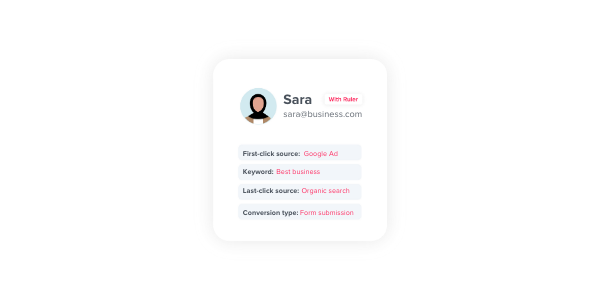
👉 Book a demo now to see how you can get more lead data into your CRM
This means you can see exactly what your leads are engaging with at which part of the customer journey.
Related: Customer journey stages and how to track them
This is the juicy bit. Forget cost per lead as your main marketing metric. Revenue per lead allows you to see how much actual revenue you can generate for every lead you bring in.
This gives you a perfect insight into what in your marketing arsenal is working.
Ruler Analytics tracks leads through the full customer journey. And since it talks to all your most important apps, it can pull the data you need and send it where you need it most.
For example, let’s say a user converts into a sale and this revenue data is added to your CRM. Ruler can pull that revenue amount and fire it to your analytics tools e.g. Google Analytics or Google Ads. In those tools, it will automatically attribute it to the correct marketing channels, campaigns, ads and keywords.
This gives you definitive proof on what’s driving your bottom line.
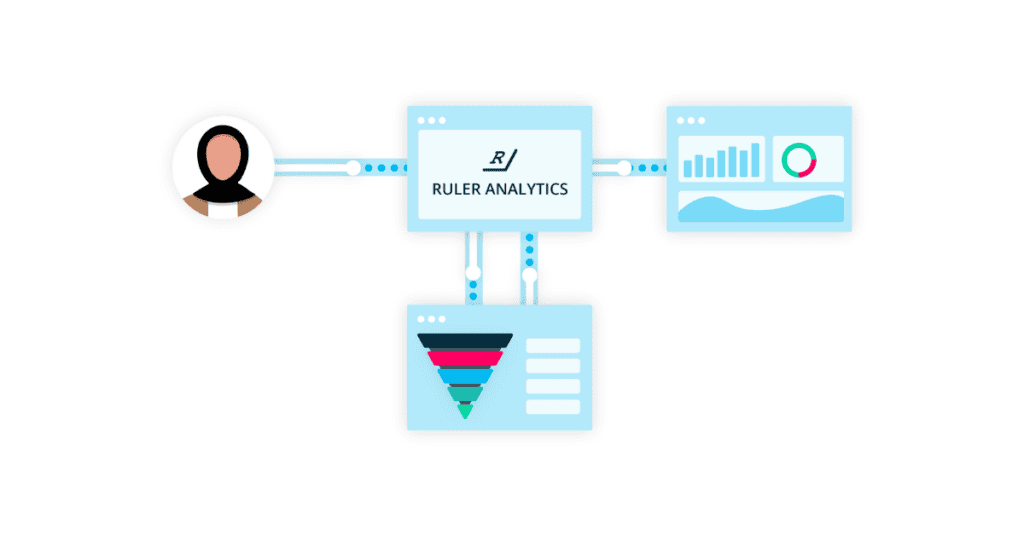
👉 Book a demo now to see how Ruler connects the dots between an anonymous user, your site and analytics and your CRM
💡 Pro Tip
Want to better understand how to connect the dots between your marketing apps? Here’s how Ruler attributes your revenue back to your marketing campaigns.
Imagine if you could accurately report back on your return on investment. And better, break that down by channel, campaign, ad and even keywords? It would be a great way to get sign off on more budget and better resources.
While cost per lead is a great way to understand how your marketing is work, it’s just a stepping stone to better reporting.
By implementing proper tracking and marketing attribution, you can go above and beyond lead generation and focus on revenue generation.
Keep up to date with more tips and tricks on lead tracking and reporting by joining our newsletter. We’ll share more insights like this, to help you take your marketing to the next level.